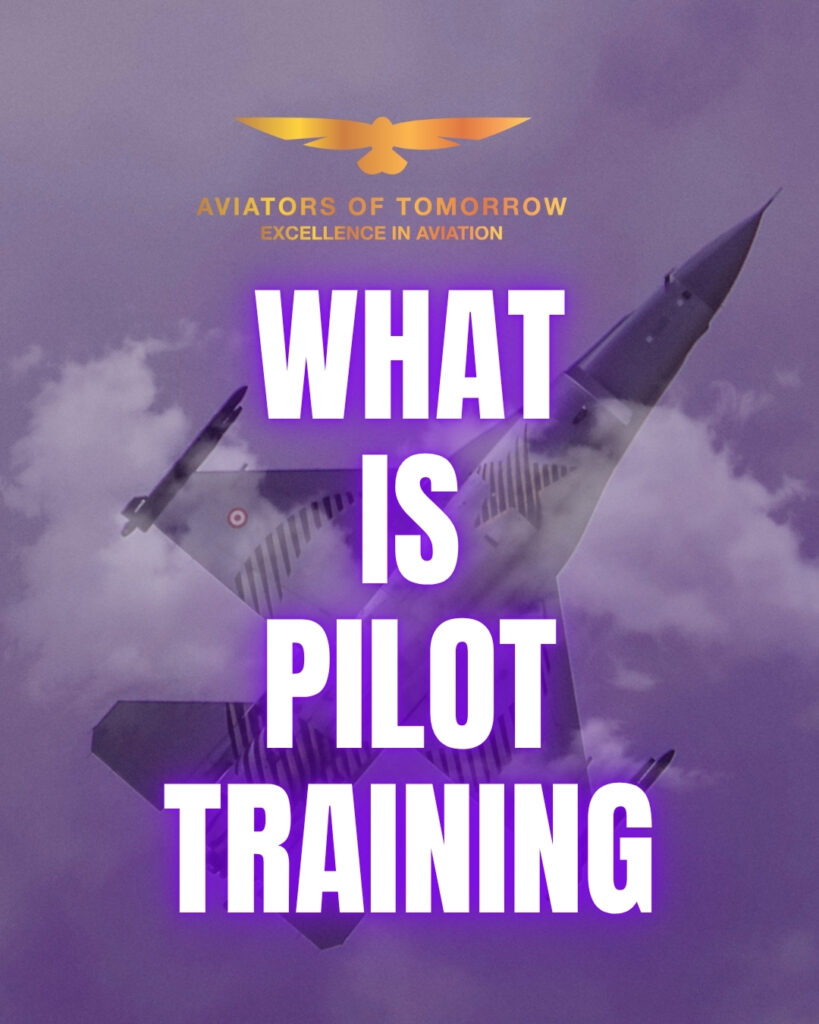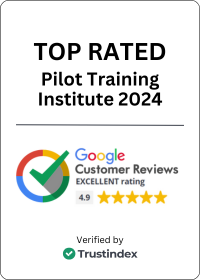Becoming a pilot is a dream shared by many around the world. The idea of flying an aircraft thousands of feet above the ground is both thrilling and rewarding. But before stepping into the cockpit, every aspiring aviator must undergo pilot training, also known as flying training. This structured process equips students with the technical knowledge, practical flying skills, and confidence needed to become licensed pilots.
If you’re considering aviation as a career, this detailed guide will walk you through everything you need to know about flying training, from requirements and costs to licenses and career prospects.

Table of Contents
What Is Pilot Training?
Pilot training refers to the professional education and hands-on instruction required to operate an aircraft safely. It combines classroom learning, simulator sessions, and real-world flying hours. The ultimate goal is to prepare candidates to obtain a pilot license, whether for private flying, commercial aviation, or military operations.
Training is regulated by aviation authorities such as the FAA (Federal Aviation Administration) in the United States, EASA (European Union Aviation Safety Agency) in Europe, and DGCA (Directorate General of Civil Aviation) in India. Each authority has its own guidelines, but the core principles of flying training remain similar worldwide.
Eligibility for flying Training
Before starting your flying training journey, you must meet certain eligibility criteria:
- Age Requirement:
- Private Pilot License (PPL): Minimum age is usually 17 years.
- Commercial Pilot License (CPL): Minimum age is typically 18 years.
- Private Pilot License (PPL): Minimum age is usually 17 years.
- Educational Qualification:
A high school diploma or equivalent is required, with emphasis on mathematics and physics. - Medical Fitness:
Pilots must pass a Class 2 and Class 1 medical examination that checks vision, hearing, physical fitness, and mental health. - Language Proficiency:
Since English is the international aviation language, you must demonstrate English proficiency.
Steps Involved in Pilot Training
1. Ground School
Ground school is the theoretical foundation of pilot training. Students learn about aerodynamics, weather, navigation, aircraft systems, aviation law, and safety procedures.
2. Simulator Training
Before flying a real aircraft, students practice on flying simulators. These replicate real cockpit conditions, helping pilots get familiar with controls and emergency situations.
3. Flying Hours with Instructor
This is the heart of pilot training, where students practice flying under the supervision of a certified flying instructor.
4. Solo Flying
After gaining confidence, trainees perform solo flights to demonstrate their skills in real-world conditions.
5. License Examination
The final step of pilot training involves written exams, flying tests, and oral assessments conducted by aviation authorities.
Types of Pilot Licenses in Pilot Training
- Student Pilot License (SPL):
The Student Pilot License (SPL) is the fundamental first step for anyone aspiring to fly, serving as your official learner’s permit to the skies. Issued by the DGCA in India, the SPL allows you to legally begin formal flying training and, crucially, fly an aircraft solo once endorsed by your flying instructor.. - Private Pilot License (PPL):
The Private Pilot License (PPL) is your first major qualification in aviation, granting the privilege to fly aircraft for personal, non-commercial use only. You cannot be compensated for piloting the aircraft. - Commercial Pilot License (CPL):
The Commercial Pilot License (CPL) is the professional certification required to fly for compensation or hire, making it the essential gateway to careers such as an airline co-pilot, charter pilot, or flying instructor.
- Airline Transport Pilot License (ATPL):
The highest level of certification. Aspiring airline pilots first pass the rigorous ATPL theory exams, earning a “Frozen ATPL”. This is the prerequisite to becoming a First Officer on a multi-pilot aircraft. The license officially becomes a full, “Unfrozen ATPL” after the pilot reaches 1,500 total flying hours (including specific time as Pilot-in-Command) and meets the minimum age requirement (typically 21).
For more information about types of pilot licence you may read our blog about “Types of Pilot Licence: Your Complete Guide to Aviation Licenses“
Cost of Pilot Training
The cost of pilot training varies depending on the country, flying school, and type of license. On average:
- Private Pilot License (PPL): ₹10 Lakhs – ₹20 Lakhs
- Commercial Pilot License (CPL): ₹35 Lakhs – ₹55 Lakhs
- Full Airline Pilot Program: ₹50 Lakhs – ₹85 Lakhs
While it may seem expensive, many airlines and aviation academies offer scholarships and sponsorships to talented students.
Duration of Pilot Training
The length of pilot training depends on the chosen path and the number of flying hours required.
- PPL: 6 – 12 months
- CPL: 18 – 24 months
- Integrated ATPL programs: 2 – 3 years
Skills Developed During Pilot Training
- Strong communication skills
- Quick decision-making
- Technical and mechanical understanding
- Leadership and teamwork
- Stress management and focus under pressure
These skills not only prepare you for aviation but also contribute to personal growth.
Career Opportunities After Pilot Training
Completing pilot training opens doors to a wide range of opportunities:
- Airline Pilot: Flying passengers on domestic and international routes.
- Cargo Pilot: Transporting goods across regions and continents.
- Charter Pilot: Operating private jets for business clients or individuals.
- Flying Instructor: Training the next generation of pilots.
The aviation industry is experiencing steady growth, and skilled pilots are in high demand globally.
Tips for Choosing the Right Flying School
- Accreditation: Ensure the school is certified by your country’s aviation authority.
- Fleet and Facilities: Look for modern aircraft and updated simulators.
- Experienced Instructors: Qualified trainers make a huge difference in learning.
- Graduate Success Rate: Check alumni employment statistics.
- Financial Options: Review scholarships, loans, and sponsorship programs.
Challenges in Pilot Training
While rewarding, pilot training comes with challenges:
- High costs of education and flying hours
- Rigorous medical and physical standards
- Intense workload of ground school and flying sessions
- Competitive job market in some regions
However, determination and passion for aviation can help overcome these obstacles.
Conclusion
Pilot training is a transformative journey that demands dedication, discipline, and passion. From mastering flying theory to clocking hours in the cockpit, the process equips aspiring aviators with the knowledge and confidence to pursue a rewarding career in aviation.
Whether you dream of flying for leisure or becoming an airline captain, flying training is your gateway to the skies. With the right preparation, guidance, and commitment, your journey from student pilot to professional aviator can truly take off.

